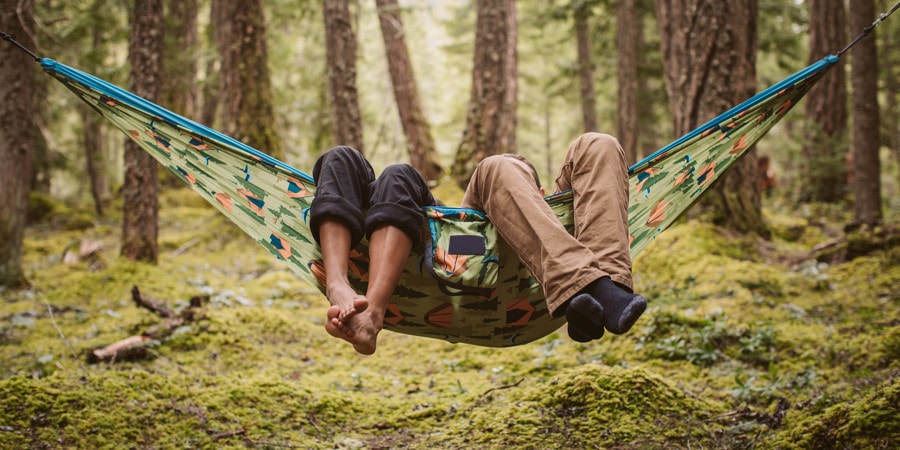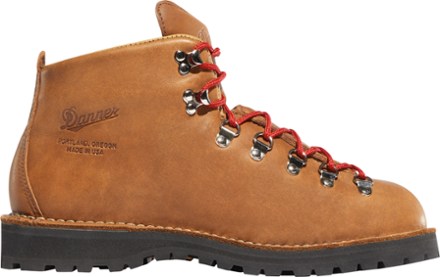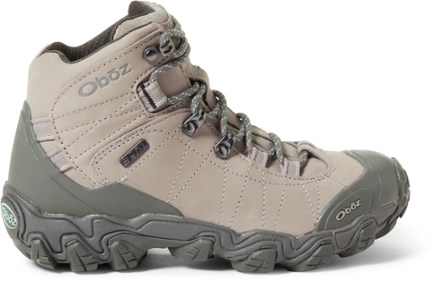
How to Choose a Hammock
Hammocks have become serious hangout gear for the outdoors. Sightings of these colorful slings hovering between trees are becoming more and more common. For some, a hammock is the ultimate chill-out spot. For others, it takes sleeping under the stars to a whole new level. If you're thinking about getting a hammock, we can help.When choosing a hammock, consider the following factors:Size: The main difference here is single vs. double; most people choose a double for comfort, not necessarily because they plan to hang with a friend.End use: For backpacking, weight is the key consideration; for camping and hangout time, durability matters most.Accessories: You need a suspension system (straps) to set it up; other popular options include an underquilt for cold temps, a tarp for rain and a net for bugs.Hammock tents and sleep systems: Hammock tents usually include a hammock and all the accessories needed for sleeping overnight. You can also build your own system, starting with a hammock, and then adding accessories later to create your own backcountry or camping shelter.Looking for some quick recommendations? Check out Staff Picks: Best Hammocks.Video: How to Choose a HammockShop Hammocks Hammock Sizes and SpecsOne of the key decision factors when buying a hammock is whether you want a single or a double..Here are tips for choosing between single and double hammocks:Single hammocks: Most singles have a width in the 4- to 5-foot range. Getting a single-wide saves weight (a plus for backpackers) over a double, with the tradeoff being that the single offers a less spacious lounging or sleeping experience. Singles' weight limits range from 300 to 400 pounds, with ultralight capacities closer to 250 pounds.Double hammocks: Most models have a width in the 5- to 6-foot range. In addition to offering a more spacious lounging or sleeping experience than a single, a double gives you the option of two people sharing hammock time. Doubles have capacities from 400 to 500 pounds, with ultralight models closer to 350 pounds.Hammock length: Hammock lengths vary much less than widths, and, unless you're extra tall, you won't need to worry about this dimension. A rule of thumb for camping and lounging hammocks is to look for a hammock that's at least 2 feet longer than your height, which turns out to be most hammocks for most people.Hammock fabric: Another spec that can be useful, though not all models list it, is "denier." Heavy-duty fabrics have higher denier numbers than ultralight fabrics. ENO hammocks, for example, use 70-denier fabrics in more robust models and 30-denier in lightweight models. The tradeoff for low weight is that rough use will wear out a low-denier fabric more quickly than the same type of fabric with a higher denier number.Hammock AccessoriesMost accessories will work with any brand of hammock, but you should read the product descriptions carefully to be certain.Suspension system: Most hammocks include carabiners that have a sufficient strength rating. But a pair of tree straps—your suspension system—is often purchased separately. Make sure that any strap you buy is at least 0.75 inches wide because thinner straps may dig into bark and damage trees.Underquilt: If you're sleeping and the cool air is wrapping around your bottom side, it will feel icy cold if there's no insulation underneath you. One option is to slip a sleeping pad into your hammock. A separate underquilt is warmer, though, because it hangs outside, where you won't compress the insulation between you and the hammock.Rain tarp: This hangs above the hammock and uses guylines to maintain a taut pitch. As with any tarp, bigger models offer more protection and rain can sneak underneath it occasionally when the wind blows sideways.Bug net: Look for models with 360-degree protection, because they also hang underneath to protect your back. Be sure, too, that your net has "no-see-um" netting (most bug nets do) so that it will keep out those gnat-size pests.The accessories listed above are some of the most common ones, but you can find all sorts of other fun add-ons—everything from hammock stands to drip straps that keep rain from sneaking in along your hammock straps.Shop Hammock Accessories Hammock Tents and Sleep SystemsFor overnight treks to camps where trees are plentiful, a hammock is an intriguing alternative to a traditional tent.For most people the decision between a hammock tent and a traditional tent comes down to personal preference. A hammock provides a distinctly different sleeping experience that some people love and others do not. Before you commit, borrow a hammock and sleep in it a few times to see if you like it.Hammock tent/system prosNo level ground required for setupLess impact on ground vegetationUltralight options are lighter and more compact than most tentsCooler than a tent as a summer shelter optionDoubles as a camp chairHammock tent/system cons:Can't camp above treeline or anywhere else without sturdy treesColder and less rainproof than a traditional tentNot really an option for two; never an option for more than twoMinimal interior storage; no additional covered storage unless you purchase it as an accessoryWhat you need for a hammock sleep system:You can purchase your system components a la carte, or you can buy a hammock tent or package that includes some or all of the following:hammocksuspension systeminsulating underquiltrain tarpbug nettingSome hammock tents include lightweight poles to create a more tent-like structure. Ultralight sleep systems weigh as little as 2 pounds, while more rugged setups weigh well over 3 pounds. (Note: When evaluating a modular approach vs. a system, make sure you're comparing the total weight for all components.) Also know that hammock "tents" must adhere to standards for flame-retardant materials, which isn't always the case with bundled systems or shelter systems you create yourself.Hammock tents/systems for backpackers: Dimensions are snug to save weight. Some models list a maximum sleeper height. At a minimum, you want one that's longer than your height. Ultralight models use less robust materials to minimize weight—lower denier fabric numbers and lower weight capacities are tipoffs.Hammocks tents/systems for car campers: If you plan to sleep overnight in your hammock rather than just set it up near your camping tent, you need to consider the weather as you decide which accessories to add to your setup. The difference is that you have the luxury of choosing hammocks that are bigger and more heavy duty than you'd want to haul in a backpack. You can also look at more deluxe systems that combine multiple hammocks under a single rain tarp.Shop Hammock Tents Hammock Setup TipsAim for a 30-degree strap angle: A hammock hung at that angle will have enough give for you to nestle nicely, but not so much sag that your back bows uncomfortably. If you can't achieve 30 degrees, then go steeper, because a little sag will feel better than a boardlike flat pitch.Sleep at an angle: Minimize the amount your back bends by angling your body about 10-15 degrees away from the centerline.Expect to be colder than in a tent: The amount of surface area that's exposed to cold air in a hammock is greater than in a tent. So, in addition to a good underquilt, consider taking a warmer sleeping bag.Related ArticlesHow to Hang a HammockStaff Picks: Best Hammocks




